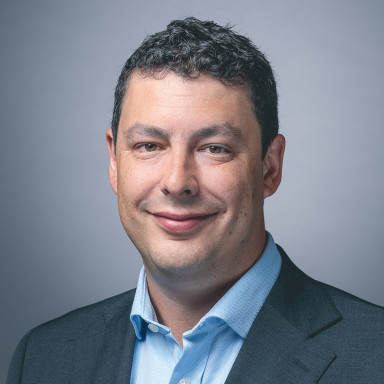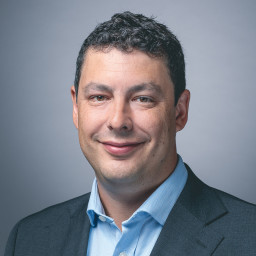All information is correct as at 31 December 2022 unless otherwise stated.
Picking ‘the bottom’ of any market is nigh on impossible, even for the most experienced investors. So, this article isn’t meant as an indication that bonds won’t fall further in value from here. But bond yields do look more appealing now than they did 12 months ago.
Backing bonds – why now?
Since 2021, central banks across the globe – from Equatorial Guinea and Rwanda, to the US and UK – have been raising interest rates. The impact on bonds has been a fall in prices and increase in yields, or interest payments. Remember bond prices and yields generally move in opposite directions.
If you held bonds in your portfolio during this period, you’re very likely to have seen these fall in value. And if there are further interest rate rises, there could well be further falls in value too.
But here’s the rub – at the start of 2022, ten-year government bonds from the US, UK and Germany were expensive, meaning the yield you earned by owning them was 1.5%, 1.0% and -0.1%, respectively. The yields on the same bonds as at 31 December 2022 stood at 3.9%, 3.7% and 2.6%, respectively. This is a big difference.
It’s not just government bonds. The yields on bonds issued by companies – corporate bonds – are typically equal to government bonds, plus a bit more, to allow for the additional risk that they won’t pay you your money back due to going bust. So as government bond yields rise, so do other bond yields.
For example, the S&P USD Global High Yield Corporate Bond index had an average yield to maturity of 6.1% as at 31 December 2021. Wind the clocks forward to 31 December 2022, and this average was 9.7%.
Yields, interest rates and cheeseburgers
Of course, there’s no such thing as a free lunch. There are very good reasons why these bonds have fallen in value and are now offering notably higher yields.
Higher inflation means the fixed rates of return you typically receive from a bond aren’t worth as much now as they were 12 months ago. If you held a bond 12 months ago and it was paying you a yield of £5 a year, you could have bought five cheeseburgers from McDonald's. If you still owned that same bond now, that £5 can only now buy four cheeseburgers.
So, in terms of cheeseburgers, the value of your yield in the real world has decreased.
There’s also the possibility of further interest rate rises by central banks. This could increase yields even more from here. So, you could be better off not buying bonds now but waiting for yields to increase further and buying the same bonds in the future, but at a cheaper price.
We’re not interested in playing this game because many people lose at it. Nobody knows whether bond yields are going to rise or fall over the short term.
Will bond yields be lower (and therefore prices higher) at some point over the next five years? Likely.
Over the next ten years? Even more likely. And you’ll be paid a yield in the meantime, too.
Will there be volatility along the way? Almost certainly.
Mixed investment fund picks to weather the storm
Joseph Hill, Senior Investment Analyst
In difficult and volatile times, it’s hard for investors to keep track of emerging risks and opportunities. At times like these, there’s value in leaving it to the experts.
Investing in a mixed asset fund, which invests in bonds and shares, offers access to a carefully crafted, ready-made investment portfolio run by experts in their field.
Here are some talented managers who could help weather the storm.
Investing in funds isn’t right for everyone. Investors should only invest if the fund’s objectives are aligned with their own, and there’s a specific need for the type of investment being made. Investors should understand the specific risks of a fund before they invest, and make sure any new investment forms part of a diversified portfolio. Investments rise and fall in value, so you could get back less than you invest. This is not personal advice. If you’re not sure what’s right for you, seek advice.
For more information on these funds and their risks, please see the links to their factsheets and key investor information below.
1. Pyrford Global Total Return Fund
Led by manager Tony Cousins, the team try to grow investors’ wealth modestly over the long run, without all the significant ups and downs of investing fully in the stock market. The companies they invest in tend to be well-established ones from developed markets, but they also invest in some from higher-risk emerging markets.
While it won’t shoot the lights out, we like their long-term, disciplined investment philosophy, which has been in place for many years. The team have a good record of sheltering capital in market falls, but don’t expect it to keep up with rising markets.
This is an offshore fund, so investors aren’t normally entitled to compensation through the UK Financial Services Compensation Scheme.
FIND OUT MORE ABOUT Pyrford Global Total Return Fund, INCLUDING CHARGES
Pyrford Global Total Return Fund KEY INVESTOR INFORMATION
2. Troy Trojan Fund
Manager Sebastian Lyon likes to keep things simple, a quality we like. Capital preservation is key, he aims to shelter investors’ wealth just as much as growing it. Avoiding large losses has been an important characteristic of the fund and it’s tended to come into its own and hold up well in weaker markets. Given its cautious approach, it's unlikely to keep up when share markets are performing strongly though.
While the fund contains a diverse range of investments, it is concentrated. This approach means each investment can contribute significantly to overall returns, but it can increase risk. The manager also has the freedom to invest in higher-risk smaller companies.
FIND OUT MORE ABOUT TROY TROJAN Fund, INCLUDING CHARGES
TROY TROJAN Fund KEY INVESTOR INFORMATION
3. Schroder Managed Balanced Fund
This fund, led by Johanna Kyrklund, provides exposure to a broad range of assets, including global shares and bonds. Collectively it’s invested in hundreds of different companies and bonds, offering a high level of diversification in one convenient investment.
The fund could form the core of a portfolio aiming to deliver long-term growth or add some stability to a portfolio mostly invested in shares.
The managers have the freedom to invest in derivatives and high yield bonds, which adds risk if used.
FIND OUT MORE ABOUT SCHRODER MANAGED BALANCED FUND, INCLUDING CHARGES
SCHRODER MANAGED BALANCED FUND KEY INVESTOR INFORMATION
Here is a full list of all our Wealth Shortlist funds. These are funds our analysts believe have the potential to outperform their peers over the long term. However, this is not a recommendation to buy.

